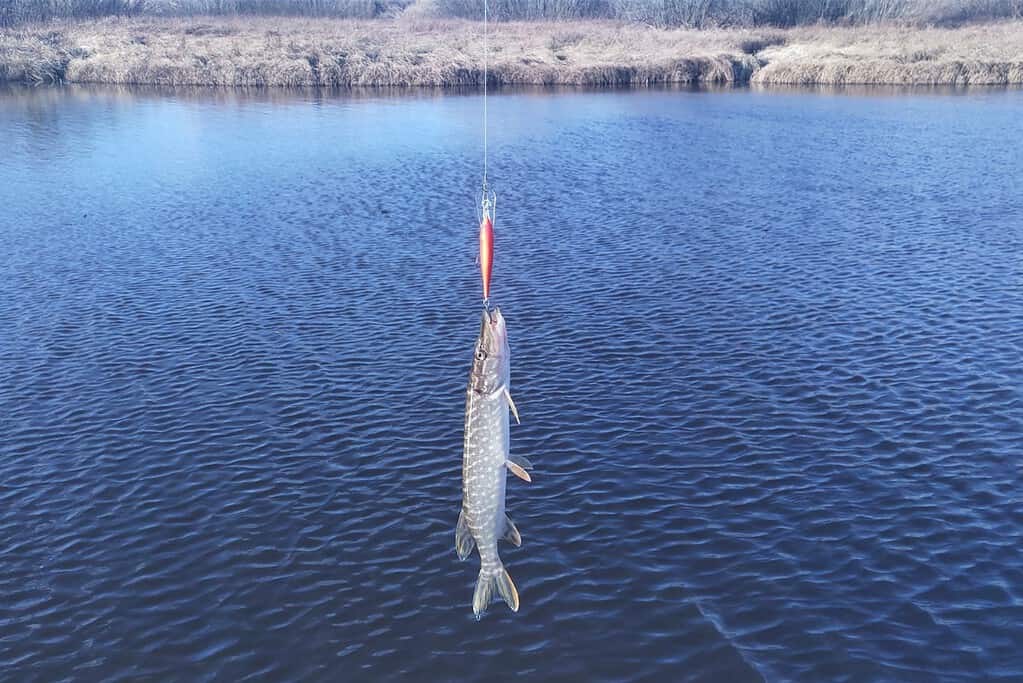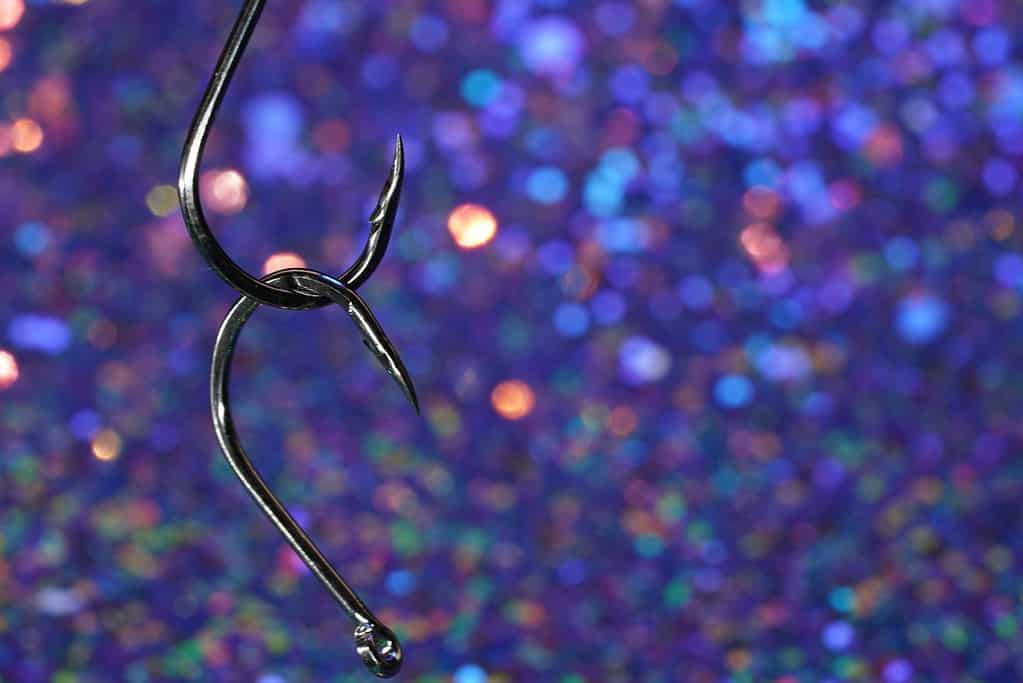If you want to sharpen your fishing hook, start by moving it over the file gently. While doing so, ensure the file hits all the sides at different passes. Ensure you shave the hook point while assuming a 45-degree angle because it helps you sharpen hooks properly and prevent micro-shaving accumulation at the tip.
Fishing can be fun, especially if you have sharp fishing hooks. They ensure the fish sticks better, and you catch more fish quickly. As a fisherman, you should make hook sharpening a routine because it aids in reducing fishing equipment costs.

Treble Hooks Sharpening Kit
A sharpening kit should include; quality hooks, hook files, hook stones, eyeglasses, a hook vice, and a hook pen.
A Hook File
Most anglers prefer using hook files because they’re easy to use and readily available in stores. When buying a fishing hook, go for the longer one because it allows you to achieve longer strokes. Also, get one with grooves because they make your work easier while sharpening hooks.
Finally, consider checking the grit count on your file. Choose one with a higher grit count of around 800 because it gives a nice, sharp, fine edge. Files with lower grit count are incredibly rough and make your fishing hook point wear out easily.
Hook Stone
A hook stone is handy, especially if you don’t have a sharpening file. Some anglers prefer using these stones because they provide a better grip, and you don’t have to use a vice.
Remember, some stones offer a finer hook point while others give more precise details at the hook tip, so you have to choose one that meets your needs.
Hook Eyeglass
Unlike files or stone, hook eyeglasses are used to magnify the hook points when inspecting and filing your hooks. They offer different magnifications, and you choose one that gives perfect precision.
Hook Vice
A hook vice helps you hold the hook firmly when sharpening it. They usually have a universal pattern that can hold all hooks, sizes, and patterns.
Benefits of Keeping Your Hooks Sharp

Although most fishing hooks are chemically sharpened, you should regularly sharpen your hooks to:
- Reduce hook pulls
- Increase their lifespan
- Save money
- Increase their pick-up rates
How to Sharpen Fishing Hooks

Do you want to achieve razor-sharp hooks and want to know the steps to follow? The steps below will help you achieve sharper edges using minimal effort.
Step 1: Bring the Hook Point Near the File
Keeping the hook’s tip near the file helps you achieve microscopic-level sharpness. Don’t make the mistake of dragging the hook’s tip backward; assuming that position will hinder you from achieving the required hook sharpness.
Step 2: Sharpen All the Hook’s Three Sides
Most files have a groove that lets your hook point slide in and sharpens all three sides simultaneously. However, this can only work theoretically, and you might not get the required sharpness. Instead, sharpen your hook point using the flat side of the file and ensure it hits all the sides at different passes.
Step 3: Assume the Same Angle
Keeping the hook point at the same angle when sharpening will help you achieve sharper edges with minimum strokes. Shave the hook point while assuming a 45-degree angle because it enables you to achieve sharper edges while preventing micro-shavings from accumulating on the tips.
Step 4: Use All Sides of the File
Most files have two sides with different grits. Start by moving the hook’s tip on the coarse side and finalize the process by moving the edges at the finest parts. Following this technique allows you to achieve sharper edges without damaging the tips.
Step 5: Minimize the Number of Strokes
Did you know you know you can achieve sharper points by minimizing the number of strokes you make when sharpening the hook? Invest in files with quality grits because they sharpen your hooks with very minimal strokes. Fewer strokes protect your hooks from wearing and tearing easily.
How to Know the Hooks are Sharp Enough
After sharpening the hooks, the steps below can help you confirm if they are sharp enough or need further sharpening.
- Step 1: Draw the file across the hook’s tip several times on each side.
- Step 2: Keep your thumbnail at a 45-degree angle and move the hook across.
- Step 3: You know the hooks are sharp enough if the edges stick on the thumbnail. However, if the hook slides across the finger easily, you can add a couple more strokes to achieve a sharper point.
Tips to Follow When Sharpening Fishing Hooks
How you take care of your fishing hooks determines their durability and efficiency. Here are some tips you can follow to help you get a competitive edge on the waters.
Invest in Quality Hooks
Choose hooks that are surgically or chemically sharpened. These hooks are usually made of high-quality material and tend to have needle-like points.
The only drawback is they are quite expensive, and if they become blunt, a normal file won’t replace the original sharpness.
Buy Hooks That are Easy to Sharpen
Bronze and stainless hooks sharpen well. Pass the file along the edges until you reach your preferred sharpness.
Ink the Hooks Well
Some hooks come with a slick coating that minimizes corrosion. Sharpening such hooks can remove the coating, thus exposing them to rust. Always cover the sharpened tip with a marker to extend the hook’s shelf life.
Final Thoughts
It’s fun going on a fishing spree using razor-sharp hooks because a sharp hook ensures you catch more fish effortlessly. Get a good fishing hook and follow the tips above to have a better competitive edge on the waters.




 Facebook
Facebook YouTube
YouTube



